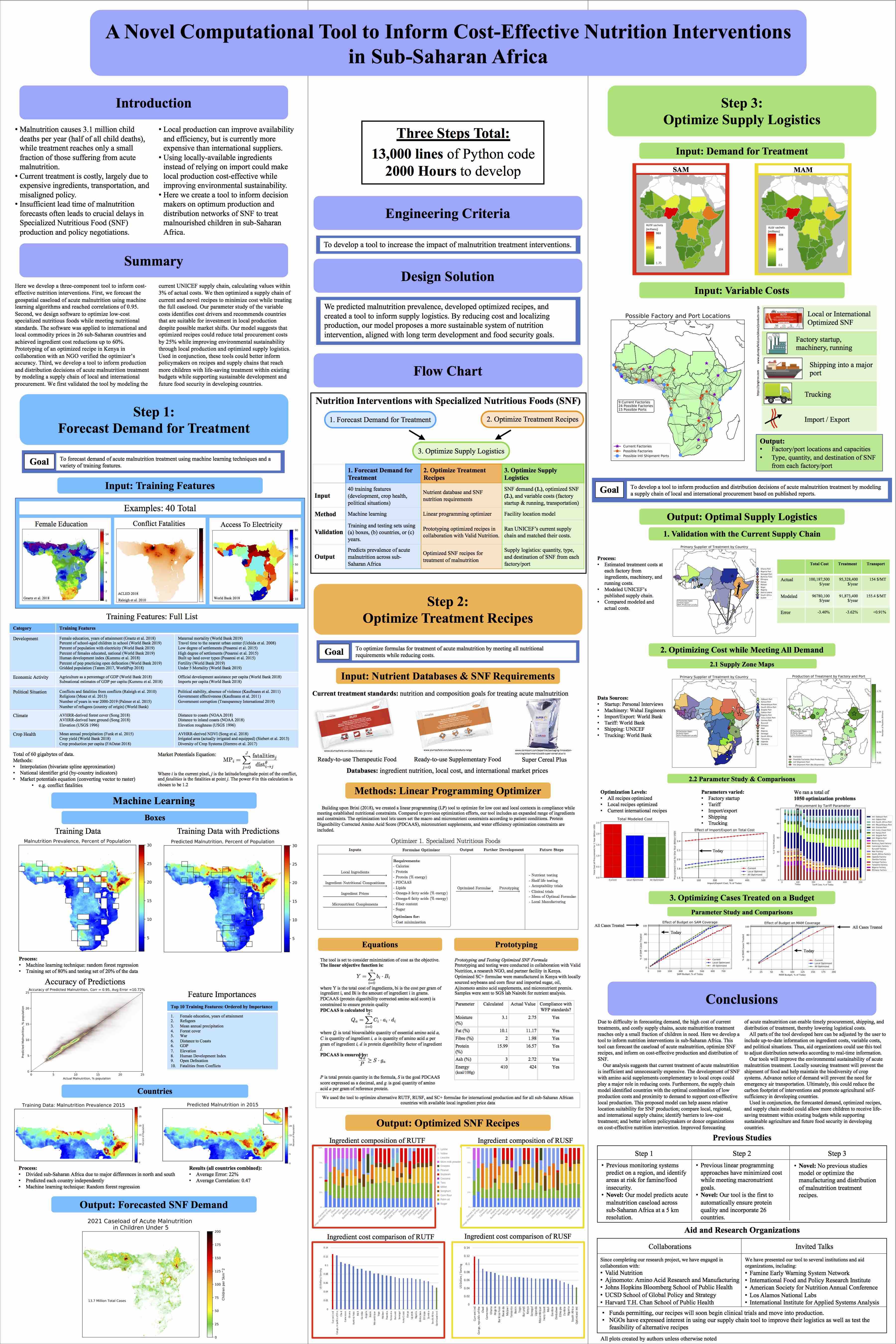A Novel Computational Tool to Inform Cost-Effective Nutrition Interventions in Sub-Saharan Africa
Abstract
Malnutrition is the leading cause of child death and treatment reaches only a small fraction of those in need due to costly recipes and inefficient supply chains. Here we develop a three-component tool to inform cost-effective nutrition interventions. First, we forecast the geospatial caseload of acute malnutrition using machine learning algorithms and reached correlations of 0.95. Second, we design software to optimize low-cost specialized nutritious foods while meeting nutritional standards. The software was applied to international and local commodity prices in 26 sub-Saharan countries and achieved ingredient cost reductions up to 60%. Prototyping of an optimized recipe in Kenya in collaboration with an NGO verified the optimizer’s accuracy. Third, we develop a tool to inform production and distribution decisions of acute malnutrition treatment by modeling a supply chain of local and international procurement. We first validated the tool by modeling the current UNICEF supply chain, calculating values within 3% of actual costs. We then optimized a supply chain of current and novel recipes to minimize cost while treating the full caseload. Our parameter study of the variable costs identifies cost drivers and recommends countries that are suitable for investment in local production despite possible market shifts. Our model suggests that optimized recipes could reduce total procurement costs by 25% while improving environmental sustainability through local production and optimized supply logistics. Used in conjunction, these tools could better inform policymakers on recipes and supply chains that reach more children with life-saving treatment within existing budgets while supporting sustainable development and future food security in developing countries.
_

